Central United Methodist Church - Photos Stained Glass
Central United Methodist Church
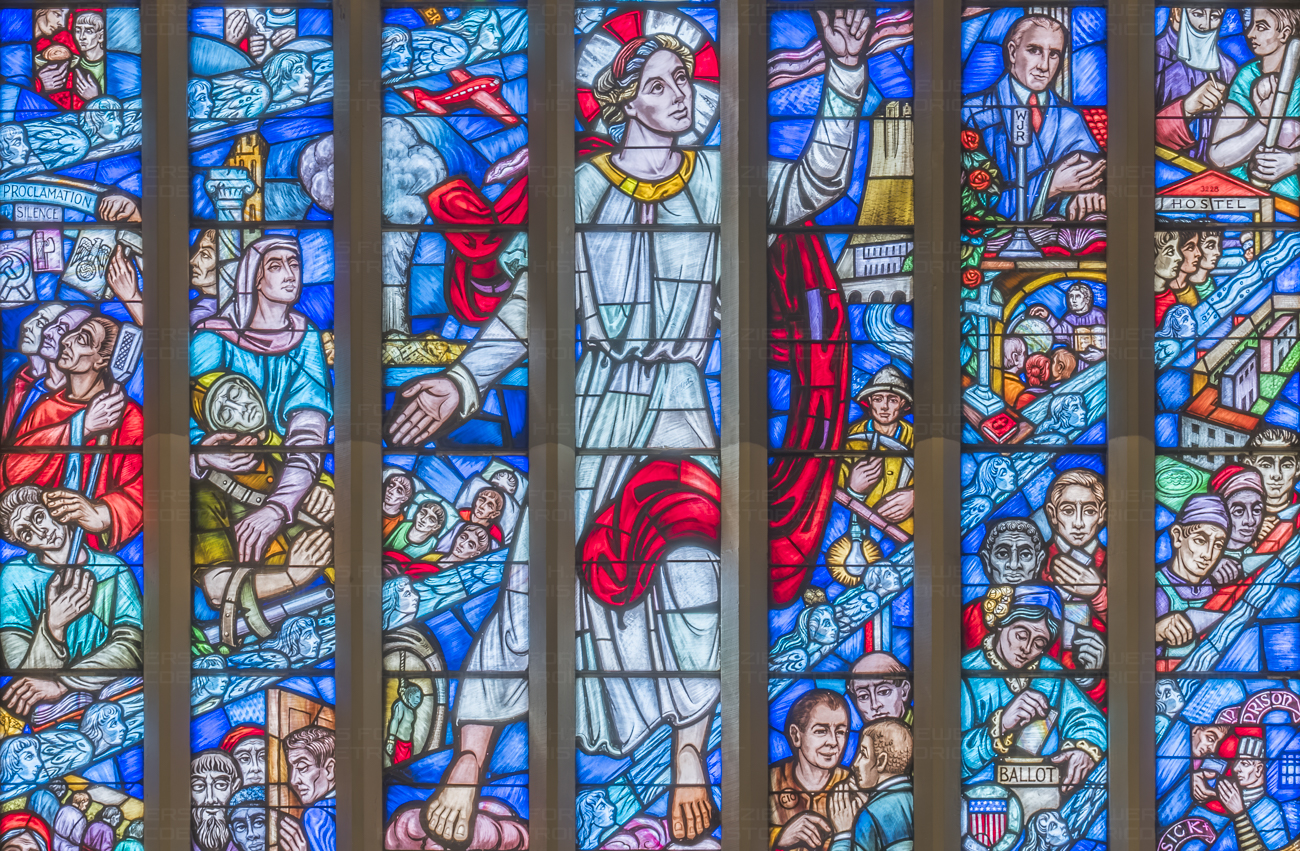
A view at the main section of "THE GREAT WEST WINDOW" facing Woodward Avenue. The subject of the great 7-lancet traceried window in the facade of the church is "I am come that they might have life, and that they might have it more abundantly," (John 10; 10).

"This soul-stirring window should be not only a great inspirational teaching window for the congregations that worship in the Central Methodist Church but, by a plan to illuminate the window from within at night, it should also be a source of inspiration to the man in the street who passes up and down Woodward Avenue, and who may see this great symbol of Christ's enduring love for him. Souls will be warmed and awakened by this manifestation that the Church is alert to their problems and needs, that the Church wants and needs their help and cooperation also, and extends an invitation to one and all, regardless of race, creed, national background or sex, to enter into God's sanctuary and worship the Prince of Peace." - From a description of the stained glass windows issued by Central United Methodist Church.

"The One who came to earth that this text might be fulfilled, our Lord and Master Jesus Christ, is symbolized by the heroic figure of a young beardless man striding triumphantly forward in the three central lancets. His one arm is upraised in a gesture waving forward those who are mired in sin, catastrophe, and disaster, that they may come to Him for a finer and better world" - From a description of the stained glass windows issued by Central United Methodist Church.
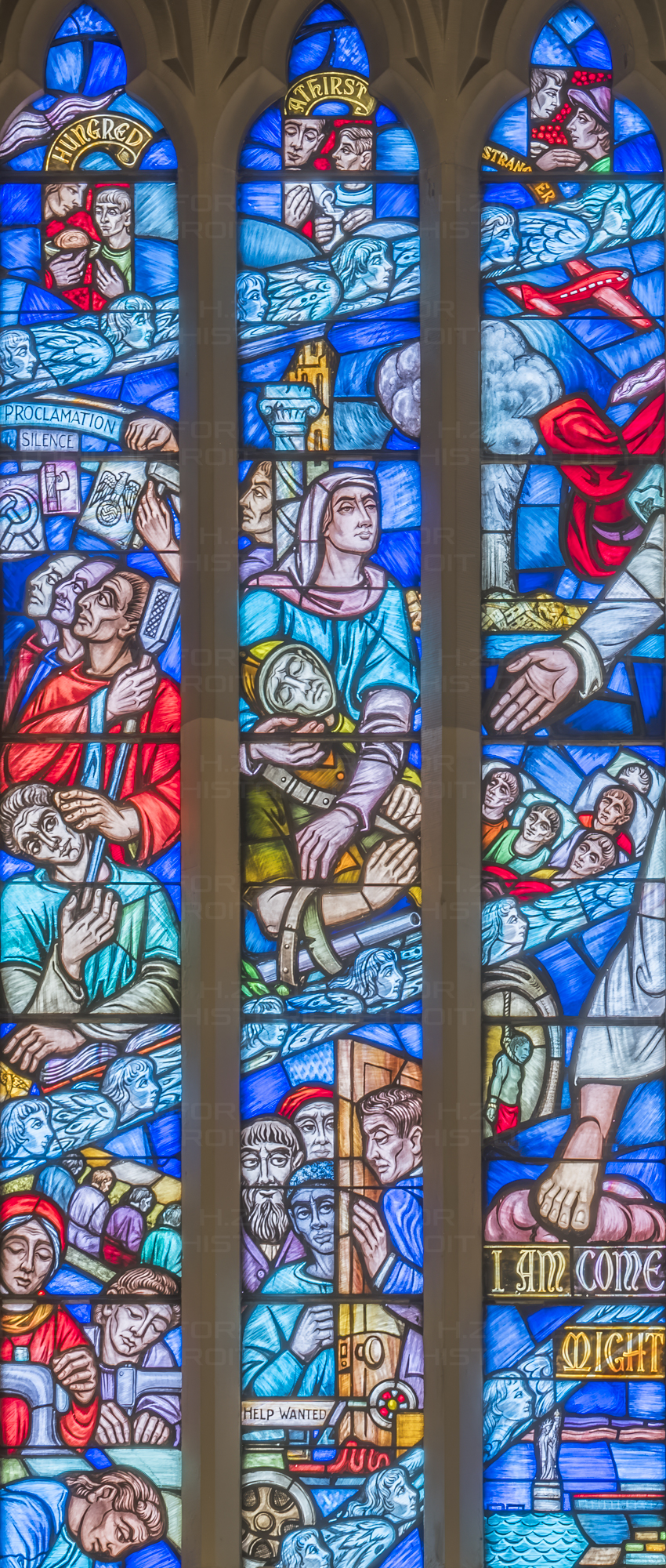
"The forces of evil and disaster are shown in the three left lancets: women and children slaving under poor working conditions; the door to employment being closed to those of the Negro race, the Jew and the foreigner; a lynching in the small insert. Above these the free voice of the Church is being stopped by the forces of the strong armed totalitarian state which is nailing its manifestos to the wall, manifestos of the Communist State, the Hitler State, the Fascist State. Next, a mother is holding in her arms her son killed on the field of battle, while many wounded and mutilated by war are shown lying on their beds of pain. The terrific blast of the atomic bomb destroys Hiroshima. All these represent the forces of evil that we know at the present time." - From a description of the stained glass windows issued by Central United Methodist Church.

"To the right of Christ are symbols of the more abundant life on earth today. The mighty forces of nature, instead of being used to destroy man, are shown being harnessed to the great dam from which comes the power of electricity for the use of the farmer and others. Next is the free pulpit where man's religion can be proclaimed without fear, free education for all and health and happiness symbolized by the Red Cross and the doctor inoculating the young athlete; also shown is that refuge in our land of plenty for those of foreign birth or foreign ancestry, the Japanese-American Hostel. Industrial problems are shown being solved, not by strikes and disorder, but at the conference table with labor and management and the mediator sitting down together to work out their differences. Pictured also is the free ballot for men and women, white and black; fair employment practices where people of all races and creeds work together side by side and live in decent housing. That these privileges are not for us alone, but also for those of other lands less fortunate is symbolized at the bottom by the Statue of Liberty welcoming Displaced People from foreign lands, and by the sharing of our great resources and wealth in the depiction of an ocean liner being loaded with supplies of food packages and clothing for those in desolate lands across the sea." - From a description of the stained glass windows issued by Central United Methodist Church.

"That the more abundant life is not founded on good deeds alone is symbolized in the four small tracery openings containing the symbols of true Christian character: Courage, Faith, Love and Loyalty. Such Christian character is built on an enduring faith in our Lord Jesus Christ, as exemplified in the two large tracery openings. The left tracery symbolizes the vicarious sacrifice of our Lord on the cross which made His saving grace possible, and the right tracery, in proof of the fact that our faith is not vain, shows the resurrected figure of our Lord. Man's goal is the Prince of Peace symbolized by the Star at the top of the window. This Star is surrounded by the symbols of the Brotherhood of Man joining forces and reaching up to grasp the outstretched hand that symbolizes the Fatherhood of God. When all have joined hands we will have achieved the peace of God that passeth all understanding." - From a description of the stained glass windows issued by Central United Methodist Church.
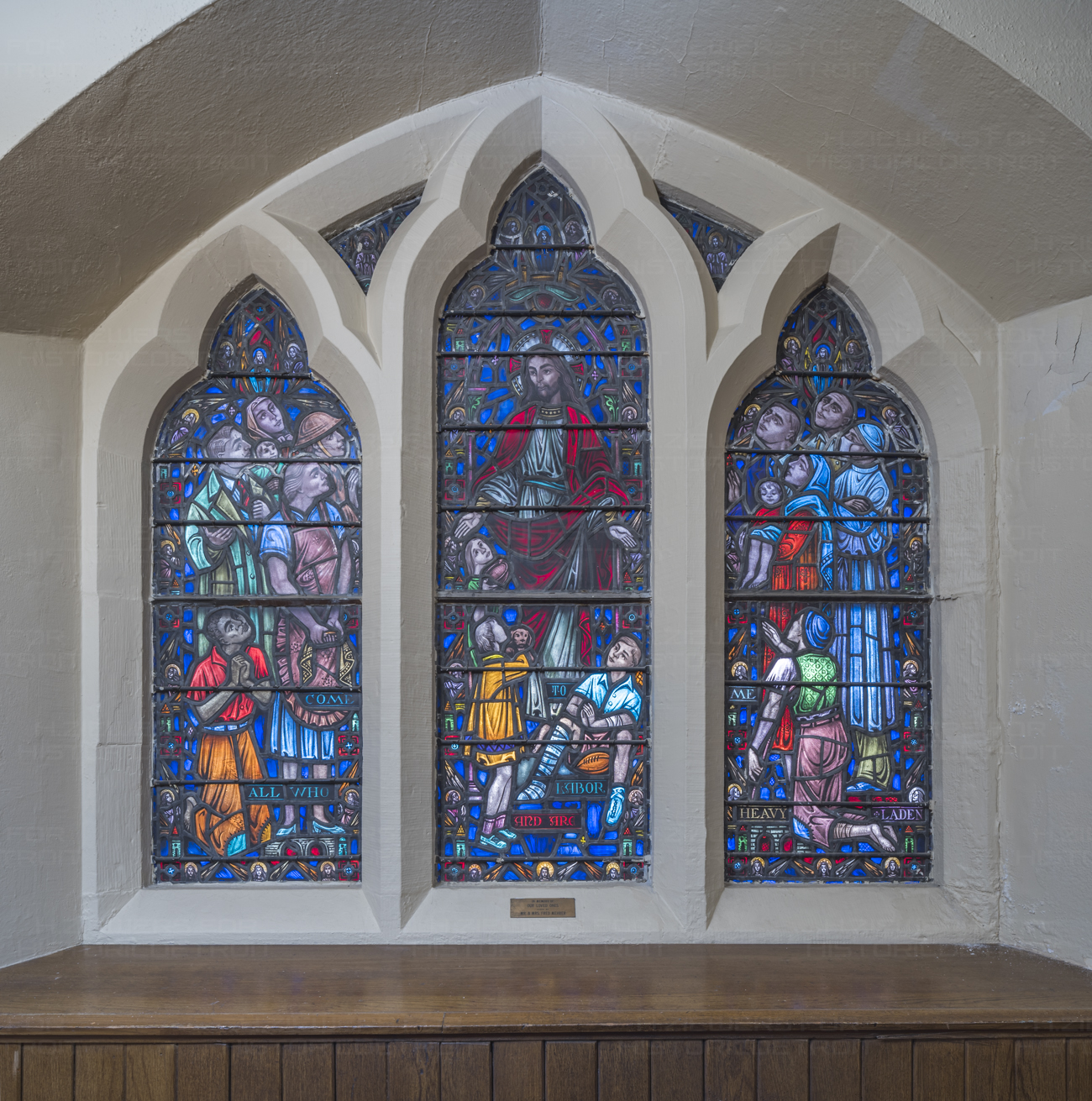
COME UNTO ME WINDOW - The 3-lancet corner window to the left of the entrance (the only one of the four corner windows not illuminated artificially) shows the compassionate Saviour, arms outstretched to all mankind, offering His matchless invitation to "Come unto Me, all ye that labour and are heavy laden, and I will give you rest. Take my yoke upon you, and learn of me; for I am meek and lowly in heart: and ye shall find rest unto your soul" (Matthew 11:28-29). He is surrounded by a wonder¬ing crowd of men, women and children from all walks of life. At the top of the center lancet is a symbolic yoke typical of the period.
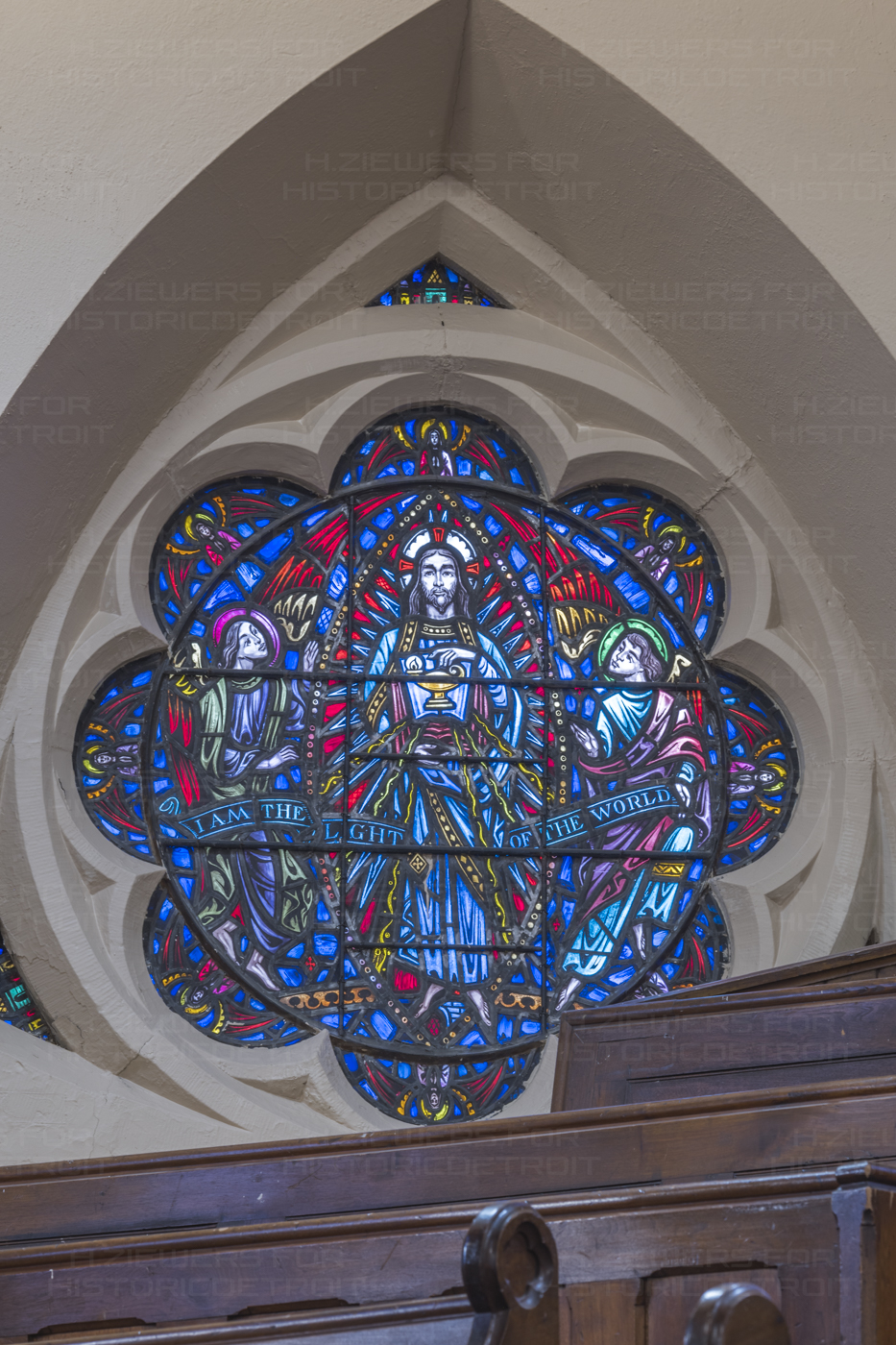
The rose above portrays, "I am the light of the world," showing Christ surrounded by a vesica of rayed light holding in His hands the lamp of Christian learning.
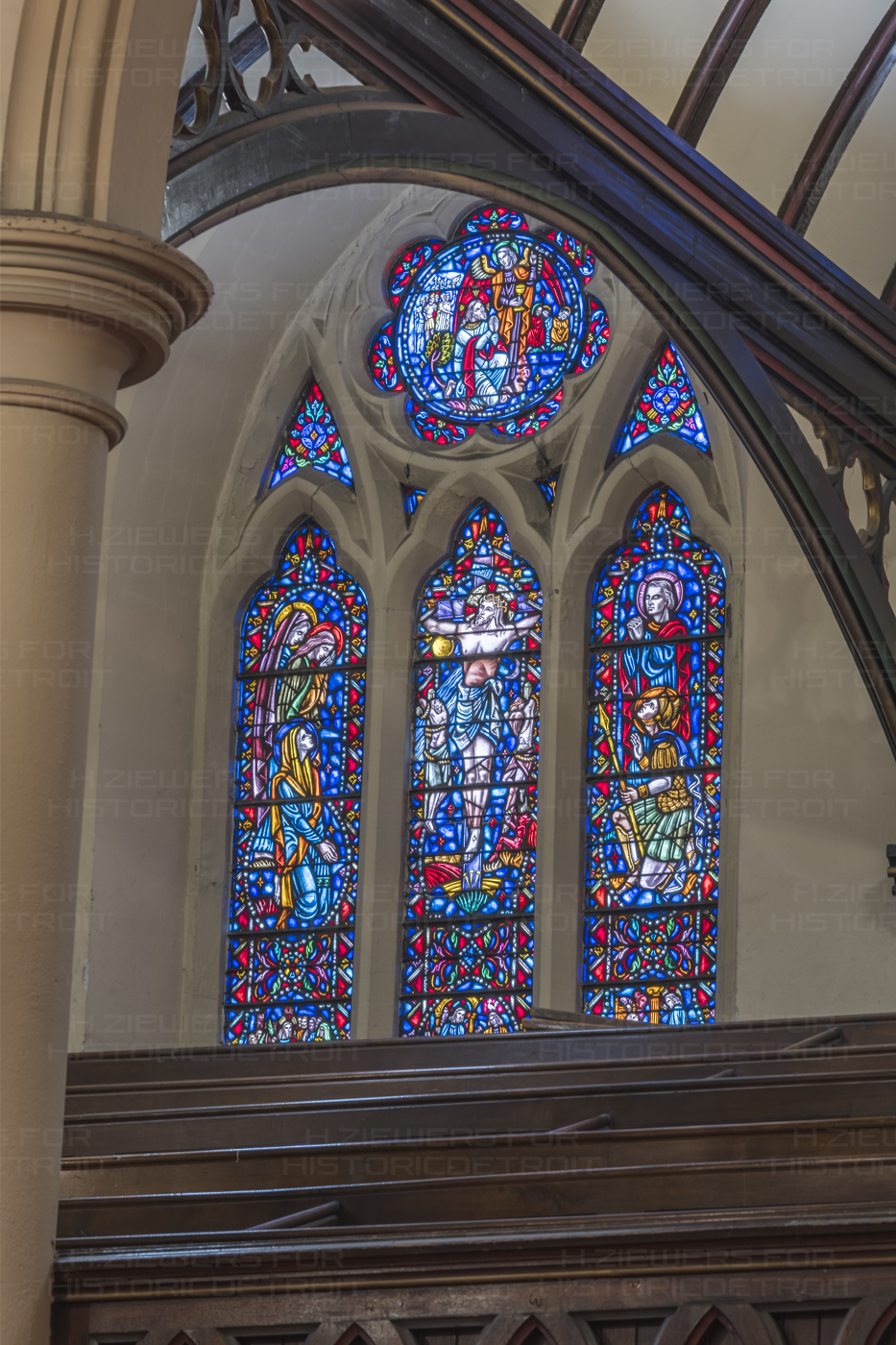
PASSION OF OUR LORD WINDOW - The 3-lancet traceried window to the left of the entrance above the gallery centers about the crucifixion of our Lord. The vicarious sacrifice is shown in the center lancet, the Saviour lifting His head in an attitude of triumphant victory. Close by are the two thieves who were also crucified, the repentent Didimus happy in the knowledge that he will soon be with Christ in paradise, the other with head sunk in despair and defeat, the devil already plucking at his leg. Those who stood by Him in His hour of need are in the left lancet, the three Marys, one of them Mary the mother of Jesus, and in the right lancet John the beloved disciple and the Centurion who falls to his knees in amazement saying, "Truly this was the Son of God" (Matthew 27:54). The rose tracery at the top shows Christ praying at Gethsemane, the angel of God standing by with the Cup. At the rear the soldiers, led by Judas Iscariot, are shown approaching the Garden to seize Christ, while the three disciples, Peter, James and John, are pictured asleep near-by. Christ is reaching His great decision, "Nevertheless not my will, but thine, be done" (Luke 22 :42).
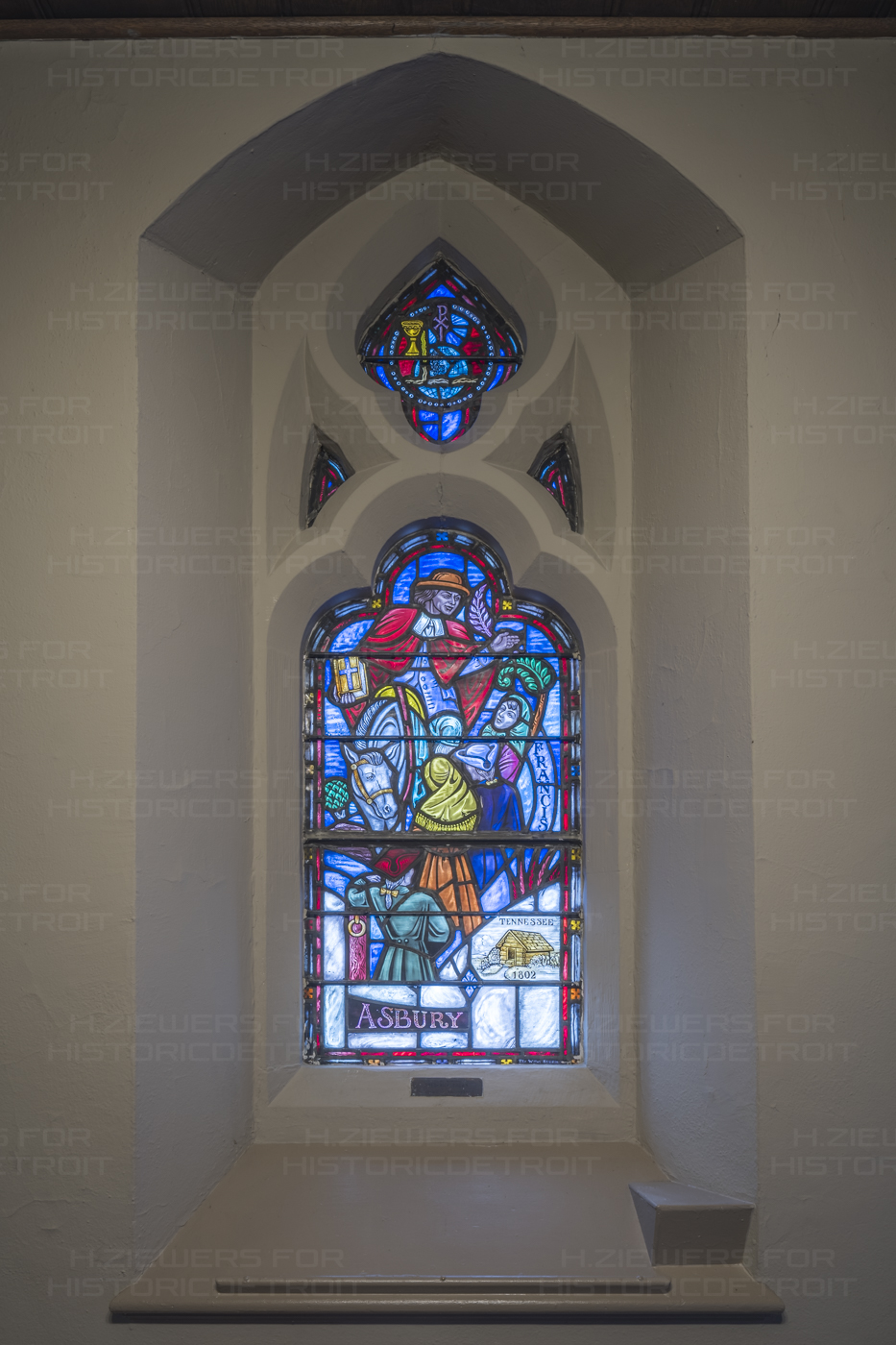
TWO SINGLE LANCET TRACERIED NARTHEX WINDOWS can be church - The one window depicts Francis Asbury, first bishop of the Metho¬dist Episcopal Church to be consecrated in the United States where he held office from 1784 to 1816. He is shown on one of his tireless journeys as he traveled on horseback the length and breadth of that portion of our continent then civilized, from the Androscoggin River south to the Gulf of Mexico, and from the Atlantic west to the Missis¬sippi; expounding the gospel and ordaining preachers. The log cabin in the insert represents one of the many Bishop Asbury stayed in during his constant travels. The seal in the tracery above shows the Chi Rho symbol for Christ surmounting the globe or world, and the Chalice out of which the sacrament of Communion symbolically flows over the world, indicating the Missionary Movement.
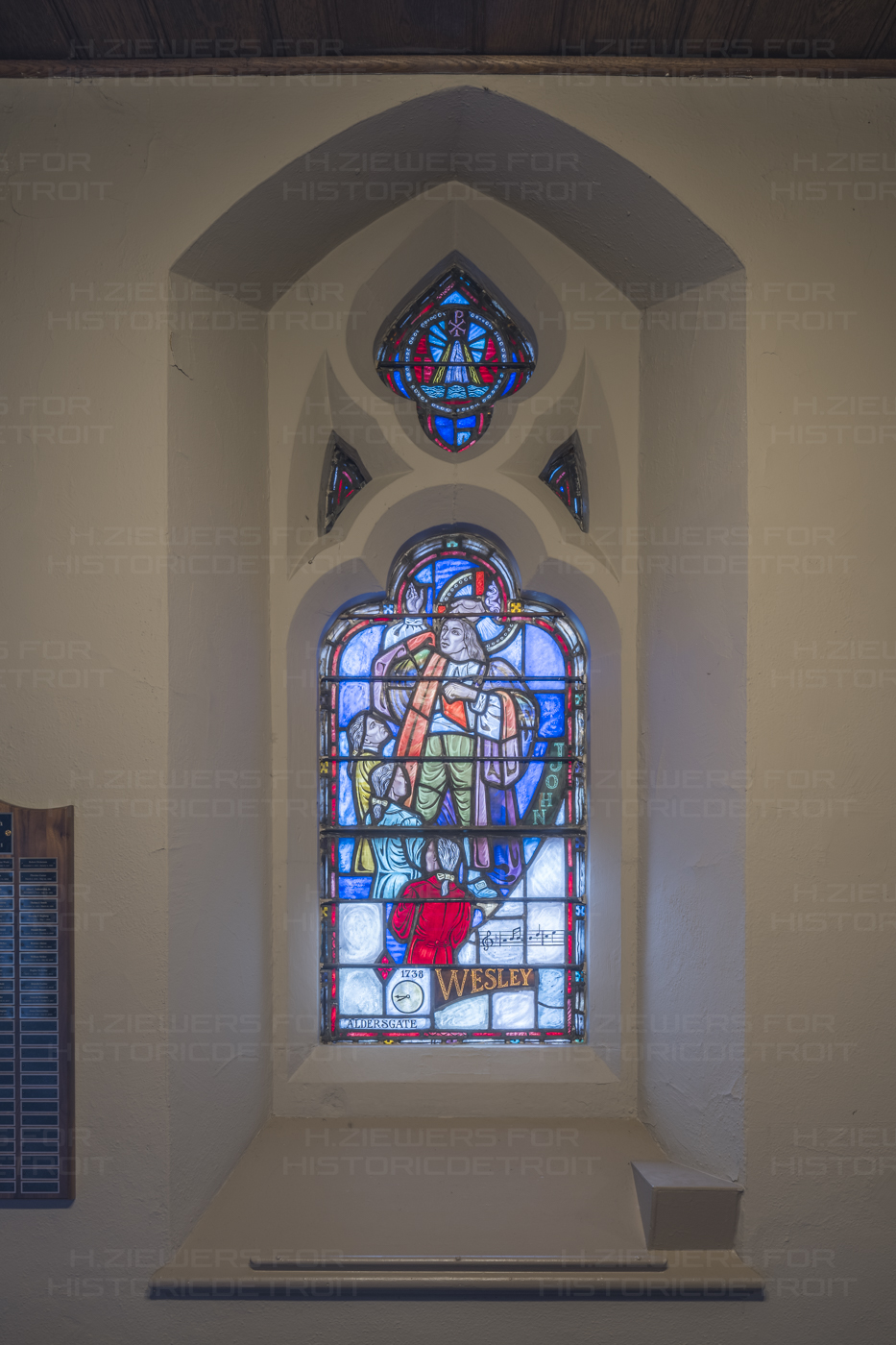
TWO SINGLE LANCET TRACERIED NARTHEX WINDOWS - The other window portrays John Wesley, founder of Methodism, and the beginning of his great revival when he suddenly felt his heart stirred at Aldersgate Street in London on May 24, 1738, when he was attending a meeting of his newly formed society. "About a quarter to nine," while Luther's Preface to the Epistle to the Romans was being read out loud, "I felt my heart strangely warmed. I felt I did trust in Christ, Christ alone, for salvation . . A bar of music from one of his brother's many hymns is indicated at the bottom of the window. The seal in the tracery opening above represents the Sermon on the Mount, or Christ Preaching.
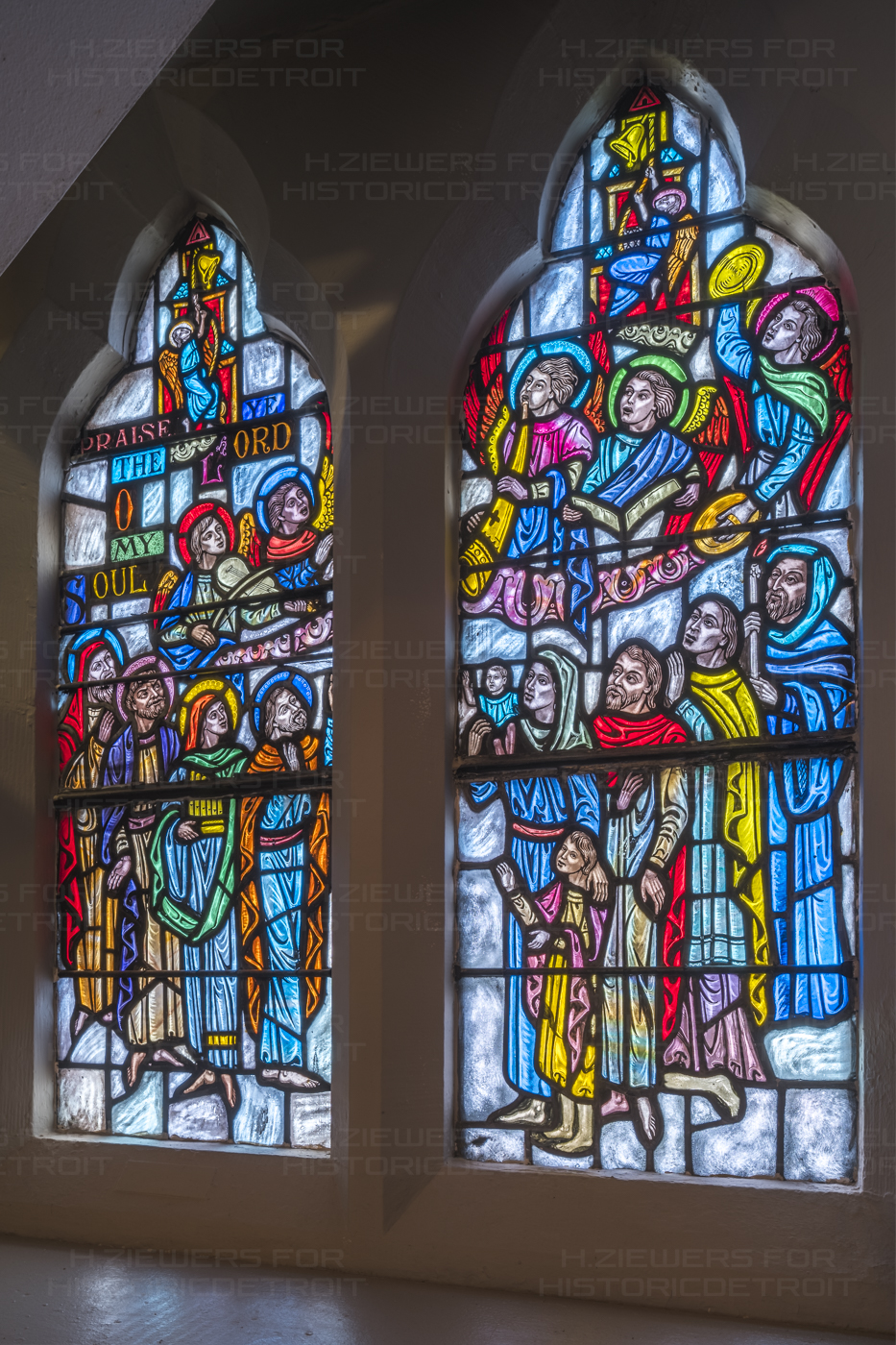
A short 2-lancet window depicts praise to the Almighty. The saints of the Church down through the ages are shown coming to praise God while, above "stained glass clouds" indicating heaven, the heavenly host praises God with instruments and song. In the lancet heads are angels tolling the church bells that are calling the faithful to come to Church and "Praise ye the Lord 0 my Soul."